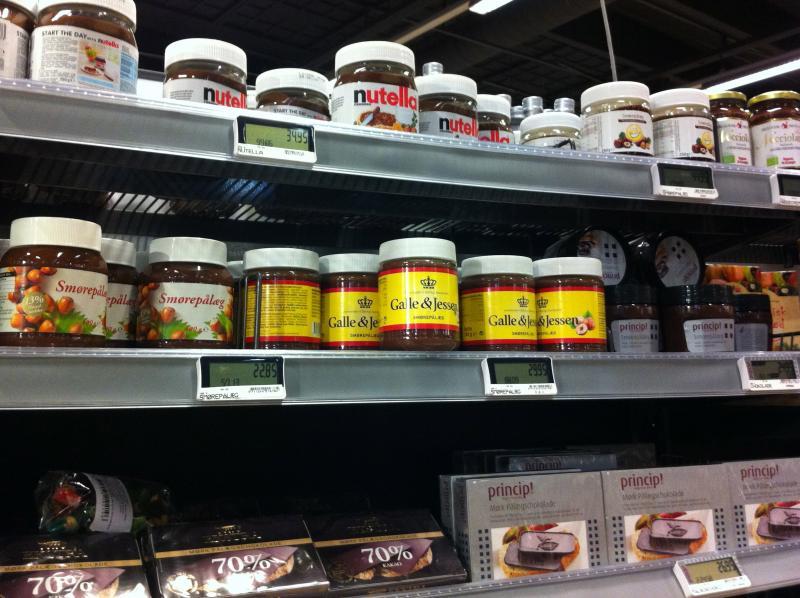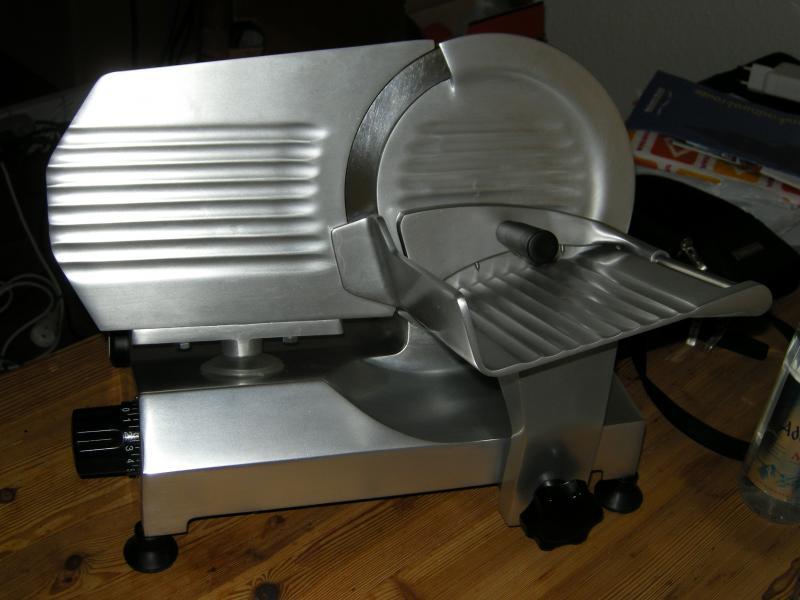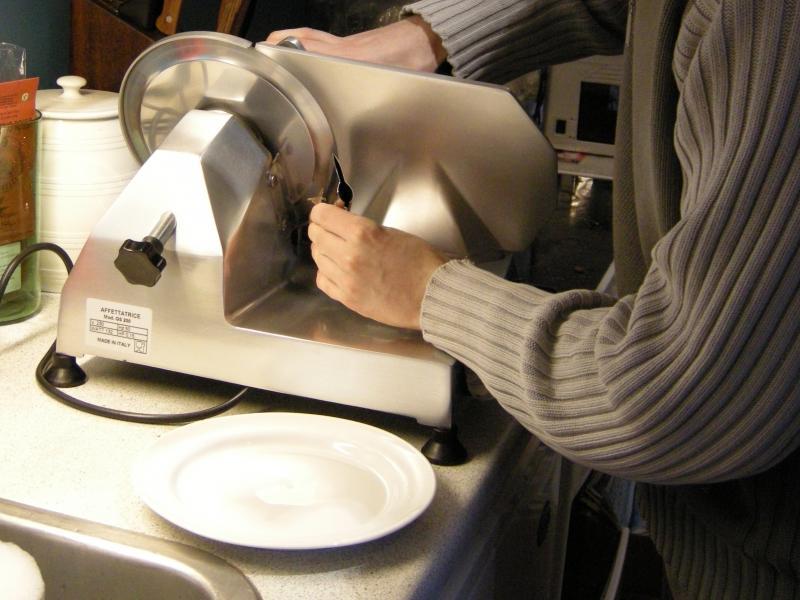-
Posts
7,674 -
Joined
Content Type
Profiles
Forums
Store
Help Articles
Everything posted by Mjx
-
Virtually all. Seriously: It's not as though I have the most phenomenal guns–and, thanks to aikido and skating accidents, I have an arthritic wrist and an arthritic elbow–but I do everything with a handheld mixer, or some sort of unmechanized tool, and never encountered a problem. If I had a stand mixer, I don't know what I'd use it for, and getting one only because some recipes mention one seems an insane waste of cash and counterspace. My boyfriend's mother adores her stand mixer, because she can just wander away while the mixer kneads bread, and I know several people who find holding a mixer or hand stirring/whipping/kneading exhausting/painful (and someday, I may find it so myself), but I cannot think of a single recipe for which a stand mixer is a sine qua non (including recipes that specify them). If you need a third hand (e.g. some candy making), another person can usually be pressed into service for the few minutes that takes. And this does seem to concern you a bit; this is at least the second topic you've started, asking about making do without a stand mixer
-

Does Salting Water Before it Boils Cause Pitting of Stainless Steel Cookware?
Mjx replied to a topic in Kitchen Consumer
Seems like the manufacturer is the one to ask about the possibility of any problems related to your question; all we can do is toss out our best hypotheses, which may be way off base, depending on the specific characteristics of the stainless steel of your cookware. -
http://forums.egullet.org/topic/141919-sealing-liquids-in-chamber-vacuum-sealer/ Also, forums.egullet.org/topic/147165-chamber-vacuum-sealers-2014–/
-
Chocolate is fine in the refrigerator, although I can't think of any good reason to store it there, unless it is really hot in every corner of your home. Like almost everything else refrigerated, it'll develop surface condensation when you remove it, so you'll want to wipe it down.
-
As has been noted by many, and on many occasions, most of the recipes you're going to come across in standard cookbooks were developed before most people had stand mixers, or are based on such recipes. Stand mixers have some advantages in terms of attachments, such as sausage stuffers, and are a boon for the frail, but otherwise, carry on with your hand-held mixer/unmechanized mixing thingies/your own fair hands, and stop worrying about it.
-
Yes. Unless you're drinking a pondful of the stuff, the number of calories from the residual fat should be relatively insignificant.
-
If a vacuum pump is used to remove most of the air from the bag, 'vacuum' has a good deal to to with 'sous vide', and is, in fact the reason it's called 'cooking/preparing food sous vide' (and the reason 'SVing' is meaningless). Vacuum pumps don't come particularly cheap, so if you're interested in vacuum sealing your food prior to cooking, the answer to the OP is 'no'. That doesn't mean you can't use the technique of cooking bagged food in a water bath at a low temperature over a long period of time, but regardless of whether or not 'sous vide' is often used to describe that (i.e. no vacuum pump involved), it's inaccurate and silly to use the term to describe this. 'It's quibbling with semantics.' Perhaps. But if someone is going to use techniques that demand precision on several fronts, it also helps to use terms that clearly, accurately, and unambigously describe what is actually being done. Saying that this doesn't matter is just lazy (I have both the MC works, and have a lot of respect for Myhrvold, I just don't agree with every single thing he says).
-
Clarify what you mean by 'approximating sous vide'. 'Sous vide' means under vacuum; how are you planning on sealing this stuff? Are you just talking about extended, low-temp cooking of bagged food in a water bath?
-
Cook's Illustrated spoke highly of the OXO 10".
-
It's Rigoni di Asiago's Nocciolata (visible all the way in the upper right of the image upthread).
-
There are lots of options for flavouring caramels, and lots of discussions of this in the forums, including Variations on Caramel, Caramels with habanero, Creating Ginger Caramels, to name a just a few. There's some discussion of doubling recipes in the Caramel Troubleshooting discussion. I've doubled a caramel recipe only once, and the only difference I noticed was that it took a lot longer to get the sugar to temperature; the results were the same (I could swear I've read that the amount of liquid used should be somewhat reduced, but I cannot remeber where, and didn't do this).
-
This is the selection at the supermarket nearby (better stocked places have really impressive selctions of chocolate-nut spreads, with various sorts of nuts): At one point or another, I've tried them all. The organic, Italian one is a bit lest sweet, and has distinct hazelnut flavour, the 'Princip' brand one has tiny particles that suggest that they considered doing a chunky version, but chickened out, and the rest are the usual super-sweet, somewhat gluey, faintly nut-flavoured preparations we all know.
-
This is the selection at the supermarket nearby (better stocked places have really impressive selctions of chocolate-nut spreads, with various sorts of nuts): At one point or another, I've tried them all. The organic, Italian one is a bit less sweet, and has distinct hazelnut flavour (I recommend it), the 'Princip' one has tiny particles that suggest that they considered doing a chunky version, but lost their nerve, and the rest are the usual super-sweet, somewhat gluey, faintly nut-flavoured preparations we all know.
-
Generally, just go one for one. Also, there's this: http://forums.egullet.org/topic/100238-everything-you-wanted-to-know-about-brown-sugar/?p=663058
-
Arrowroot is pretty gloopy and starchy; konnyaku (aka konjak, konjaku) will probably give you results closest to those you'd get with gelatin. It's also easily found, reasonably priced, and vegan.
-
It would be great over risotto or gnocchi (pumpkin gnocchi, in particular).
-
Several years ago we picked up a the smallest available Azeta commercial slicer, and it's proved itself to be a great unit. It is quite compact (when we got it, it didn't dominate the miniscule kitchen in the student flat we were living in): No chance of replacing the blade on the Hobart?
-
Both skirt and hanger are skeletal muscle (the diaphragm is skeletal muscle, check any physio. textbook, and skirt steak is from the belly), and although the heart isn't composed of skeletal muscle, it's still striated muscle, and may be treated pretty much the same way (cookingwise; i.e. it won't turn to mush). Tripe is an example of of something with smooth muscle, and I have a hunch that sous vide cooking is not the way to go with it, I doubt the flavour of smooth muscle benefits positively from this approach (and any whiff of the former contents would probably be brought out by cooking it for a long time in a sealed container).
-
Actually, unless the cattle are cavorting heraldically on their back legs most of the time, the paraspinal muscle groups do nowhere near the work that humans' do; that's the reason these cuts are so tender. Cooked sous vide, I've found these cuts to be virtually flavourless, unless they're also seared/seasoned.
-
Actually, the alcohol often also has a functional role as an organic solvent, increasing the breakdown of plant material, which is one of the reasons it enhances flavour.
-
The vacuum packing suggests a botulism risk.
-
The swelling throat thing sounds suspiciously like anaphylaxis, which can be dangerous or fatal, so before experimenting with standard-ingredient substitutions (which may themselves be a problem), it would be a really good idea to get a medical opinion on the source of the problem. Once you know what the culprit is/are, it will not only be safer, but far simpler to track down substitutions. Without any clue, even if you're careful, your search for answers is going to be extremely frustrating.
-
Some suggestions, in this discussion of U.S. Prohibition Era Drinks.





